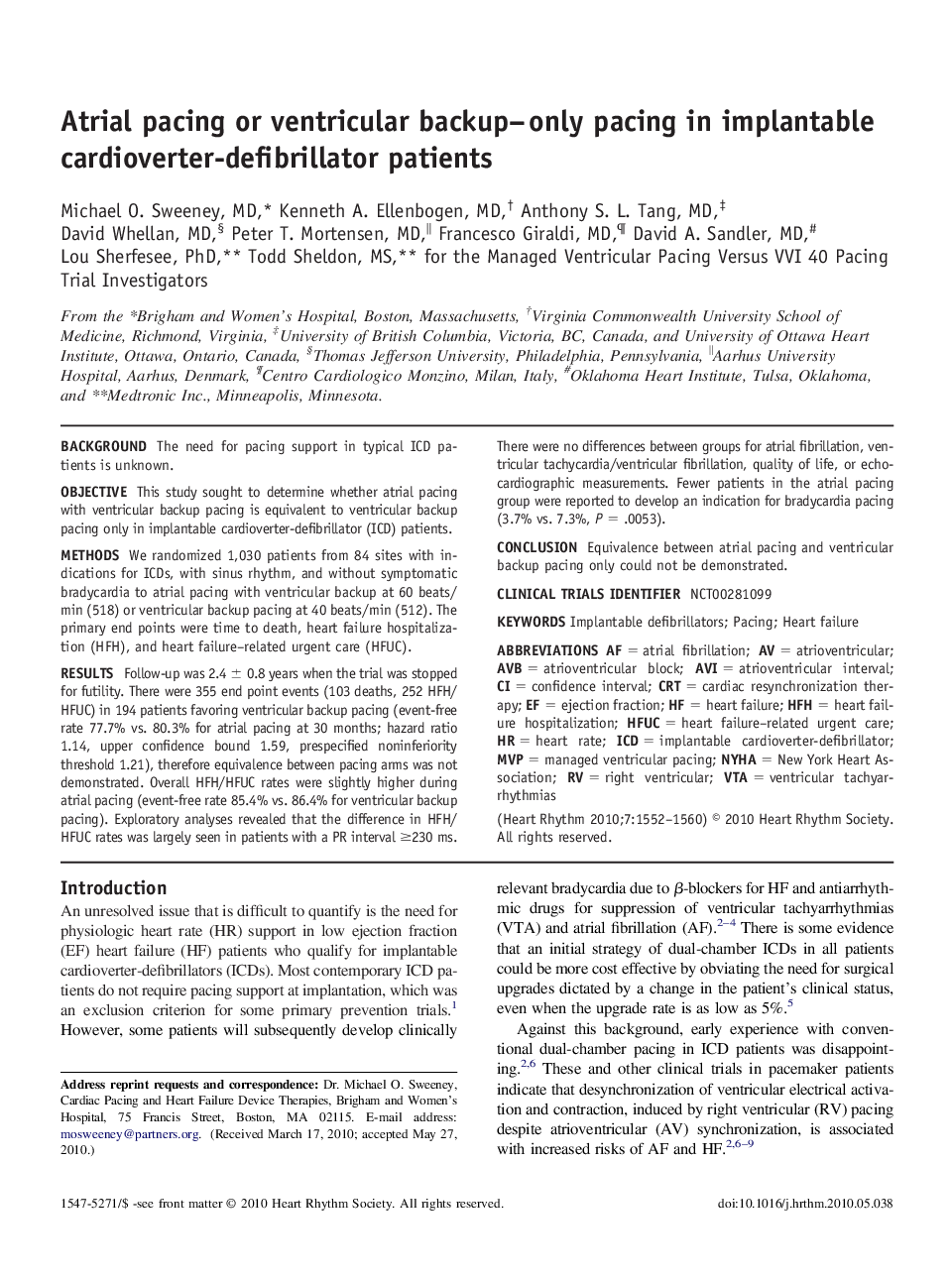| Article ID | Journal | Published Year | Pages | File Type |
|---|---|---|---|---|
| 2922887 | Heart Rhythm | 2010 | 9 Pages |
BackgroundThe need for pacing support in typical ICD patients is unknown.ObjectiveThis study sought to determine whether atrial pacing with ventricular backup pacing is equivalent to ventricular backup pacing only in implantable cardioverter-defibrillator (ICD) patients.MethodsWe randomized 1,030 patients from 84 sites with indications for ICDs, with sinus rhythm, and without symptomatic bradycardia to atrial pacing with ventricular backup at 60 beats/min (518) or ventricular backup pacing at 40 beats/min (512). The primary end points were time to death, heart failure hospitalization (HFH), and heart failure–related urgent care (HFUC).ResultsFollow-up was 2.4 ± 0.8 years when the trial was stopped for futility. There were 355 end point events (103 deaths, 252 HFH/HFUC) in 194 patients favoring ventricular backup pacing (event-free rate 77.7% vs. 80.3% for atrial pacing at 30 months; hazard ratio 1.14, upper confidence bound 1.59, prespecified noninferiority threshold 1.21), therefore equivalence between pacing arms was not demonstrated. Overall HFH/HFUC rates were slightly higher during atrial pacing (event-free rate 85.4% vs. 86.4% for ventricular backup pacing). Exploratory analyses revealed that the difference in HFH/HFUC rates was largely seen in patients with a PR interval ≥230 ms. There were no differences between groups for atrial fibrillation, ventricular tachycardia/ventricular fibrillation, quality of life, or echocardiographic measurements. Fewer patients in the atrial pacing group were reported to develop an indication for bradycardia pacing (3.7% vs. 7.3%, P = .0053).ConclusionEquivalence between atrial pacing and ventricular backup pacing only could not be demonstrated.Clinical Trials IdentifierNCT00281099
